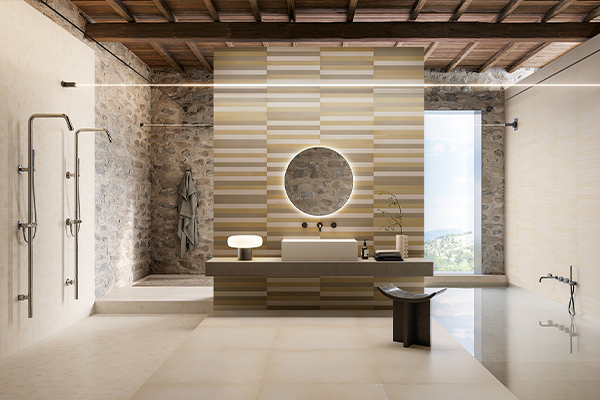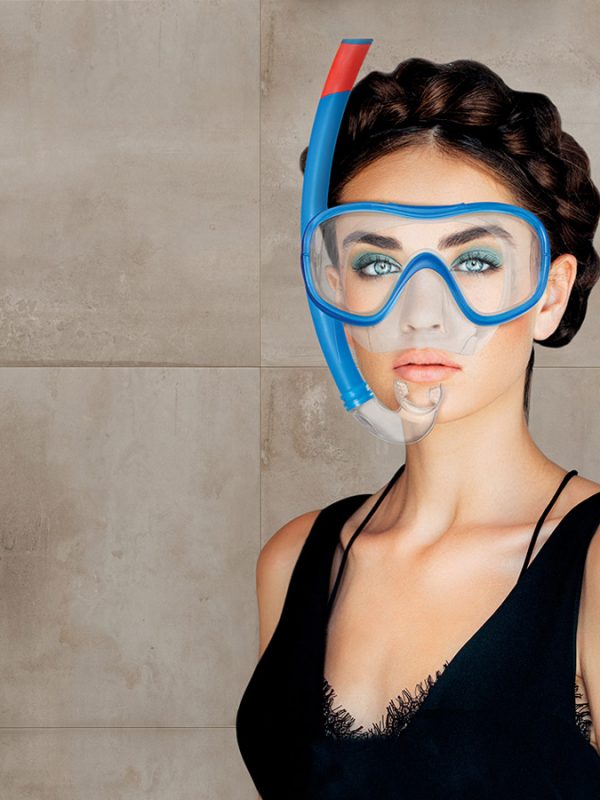
How to choose the right tiles for a walk-in shower?
According to a study carried out by researchers, nearly 69% of consumers consider the bathroom to be a room dedicated to well-being and relaxation. If you are one of those people who like to take long showers, it is essential that you choose a structure that combines practicality, ergonomics and aesthetics. Currently, Italian showers are among the most popular models on the market. Featuring an easy, modern and refined design, they appeal to households, but also to major hotel brands. Are you interested in this model? In this context, select tiles with anti-slip properties. But why is this finish essential? And what are the best components for an Italian shower? Here is some information that will help you make your choice.
Walk-in shower tiles: what are the strengths of a non-slip surface?
Nowadays, consumers do not always take into consideration the increased risk of slipping. Unfortunately, surfaces that are too smooth pose a real threat. Generally, non-slip finishes secure access to your shower. But they are also recognized for their adaptability or even for their durability.
Tiling, a modular material
Tiled surfaces with non-slip properties have been designed not only for households, but also for people with reduced mobility (PRM). Indeed, today, many retirement homes and clinics require practical and safe showers, the aim being to prevent falls. In this context, engineers have created rough surfaces suitable for all bathrooms. Whether you live in a private residence or want to build a medical room, know that textured tiling is a modular finish.
Resistance to humidity
A bathroom that is not properly insulated tends to retain a significant amount of water. In this context, it is essential to include a non-slip surface. Indeed, humidity increases the risk of deterioration. If your recipients are left untreated, they will discolor. Additionally, you will notice cracks and mold on the surface. With anti-slip tiling, your Italian shower has natural protection against damage. You therefore benefit from a more durable structure.
Antibacterial properties
According to a study carried out by American researchers, the bathroom is a real source of contamination. Between shower heads and towels, consumers are exposed to germs every day. In this context, be aware that non-slip surfaces contain bactericidal substances. These substances therefore prevent the growth and proliferation of bacteria. Furthermore, Italian showers, with their built-in shower trays, facilitate cleaningavoid the accumulation of germs.
What are the best tiles?
Today, consumers have the choice between a large collection of tiles for Italian-style shower. However, the most recognized materials on the market remain porcelain stoneware, natural stone and cement. But then, what are their advantages?
What is porcelain stoneware?
Made from a mixture of clay and minerals, this material is recognized for its density, its durability and its resistance. In addition, it tolerates temperature variations very well. Thanks to its low porosity, you avoid the proliferation of mold and fungus. Generally, it comes in a vast collection of colors and finishes (imitation wood or even marble). Furthermore, consumers particularly appreciate it for its aesthetics and for its easy maintenance. With effective anti-slip properties, porcelain stoneware improves adhesion and reinforces the safety of your Italian shower.
What is natural stone?
This stone, as its name indicates, is extracted from quarries. Generally, engineers use three natural stones to construct walk-in shower trays: granite, slate and travertine. Limestone and marble, often known for their elegance, are considered too smooth. Durable and not very porous, granite and slate have very distinct properties. With granite trays (with flamed, bush hammered finish, etc.) or with slates, you obtain a safe and reliable non-slip surface. However, the aesthetic will not be the same. Indeed, while granite offers an almost luxurious appearance to the bathroom, slate remains more rustic. Travertine has a less dense and more porous structure. Naturally textured, it creates a warm setting.
What is cement?
This material is mainly made up of limestone and clay. It is today renowned for its great versatility. With good adhesion, it is often used by architects and designers when designing Italian showers. Indeed, its rough texture limits the risk of slips and falls. In addition, this component is customizable. On the market, consumers generally have access to a wide variety of finishes and colors. If you wish, you can add a touch of originality to your bathroom. Finally, cemented surfaces prove to be particularly durable and robust.
Tiles with non-slip properties, an essential finish
Nowadays, there are standards that provide information on the level of adhesion of a tile. The two main standards, DIN 51130 and DIN 51097, allow consumers to make a comparison. DIN 51130 classifies tiles into five levels, from R9 (normal adhesion) to R13 (very strong adhesion). DIN 51097 has three levels:
- A (medium adhesion);
- B (high adhesion);
- C (strong adhesion).
So before choosing your walk-in shower tiles, study its anti-slip properties. This will give you a safer and more secure bathroom.
FAQ
What is the difference between a Italian shower and a classic structure?
Italian showers have a walk-in shower tray, which gives the space a more modern aesthetic.< /p>
What are the advantages of non-slip tiles?
These tiles make the shower safer, but they are also known for their durability, adaptability and antibacterial properties.
What are the most used materials?
To create Italian showers both safe and elegant, designers mainly use natural stone, porcelain stoneware and cement.




